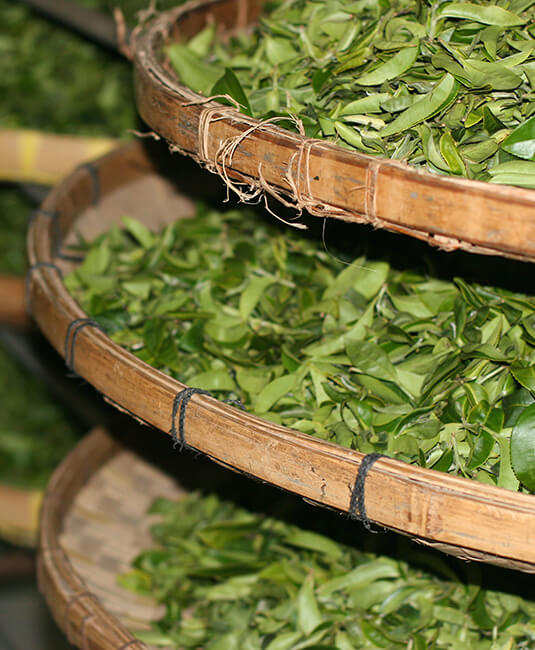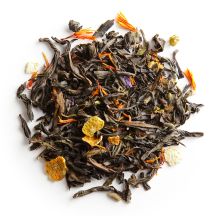Free shipping from $55

The Two Main Types of Oolong Tea
Oolong tea is commonly divided into two categories:
- Lightly oxidized teas (10%-15% oxidation): Prepared using what is known as the Chinese method.
- Heavily oxidized teas (60%-70%): Processed using a method that developed more specifically in Taiwan.

Oolong Tea Production
Every semi-oxidized tea must go through the following steps:
1. Withering: The leaves are exposed to the sun for several hours, and this process is repeated twice.
2. Sweating: This is the most critical step in Oolong tea preparation. In a room maintained at 72°F to 77°F (22°C to 25°C) with about 85% humidity, the leaves are continuously tossed under increasing pressure. This allows the flavors to develop and helps in the evaporation of water.
The duration of this step determines the final level of oxidation: a light oxidation (10%-12%) will produce lighter teas with vegetal flavors, while heavy oxidation (up to 70%) results in darker, fruitier teas.

3. Roasting: This step halts the enzymatic reaction. The leaves are heated at high temperatures in woks or drum roasters for a few minutes. After this, the leaves are not completely dry and remain pliable for the next step.
4. Rolling: Similar to green tea, rolling shapes the tea leaves and influences the flavor profile. Often large in size, the leaves may be simply crushed, as with Shui Xian, or rolled into large balls, as with Dong Ding.
Finally, the leaves are dried and packaged.



